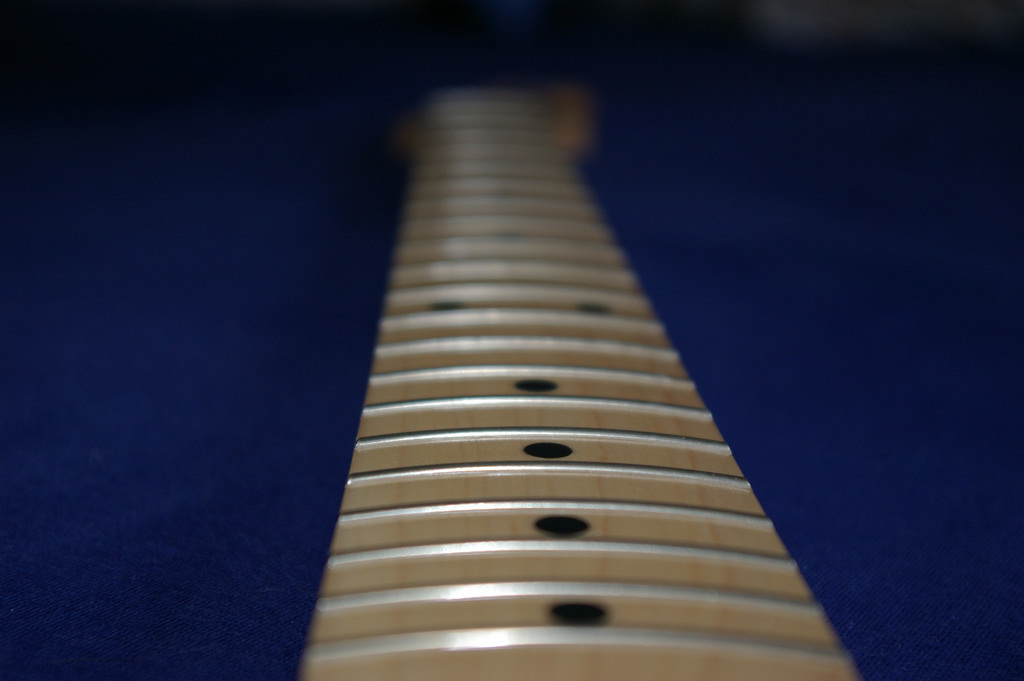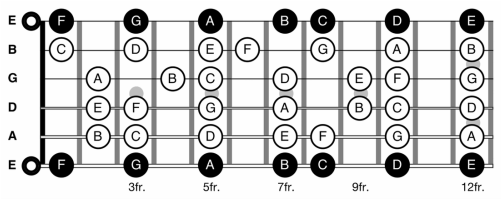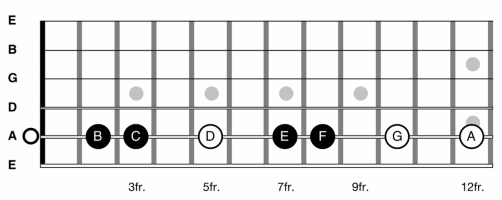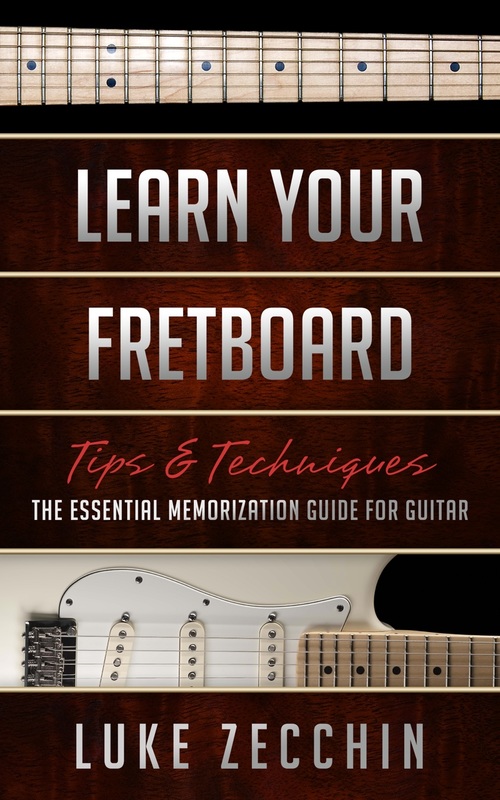Refining Our FocusThe fretboard can certainly seem overwhelming at first. Just looking at the guitar neck, we’re confronted by various strings, an expanse of frets, a bunch of dots, and an assortment of musical notes. That’s all before we even try to play anything! Our task as guitar players is to process and make sense of all this information. Unfortunately, for many aspiring musicians, this task just seems too difficult or time consuming. The premise we’re working with, however, is that memorizing the notes on the fretboard can be neither difficult nor time consuming. Although learning anything of value requires a bit of effort, for a moment let’s forget the seeming enormity of this task and simply focus on a few key aspects of what we can see:
This can be consolidated further to help streamline the information we’re working with. Since each fret represents a half step, all sharps and flats on the fretboard can be understood as shared tones between notes (e.g., G♯ and A♭ occupy the same fret). In other words, sharps and flats can be viewed in their proximity to natural notes (notes without sharps or flats). For example, if we can pinpoint F on the fretboard, by default we’ll also be able to locate F♯, given that the two notes are so closely related. With that in mind, it makes sense initially to concentrate our focus solely on the natural notes of the musical alphabet. This makes the task of fretboard memorization much simpler and more manageable. Notice the key things we can now observe:
Tip: Another way of saying this is that every note has its own sharp except B and E. One Fret or Two?The last point in the previous section is fundamental for mapping out notes across the entire guitar fretboard. Without even realizing it, we’ve just learned a simple system we can apply to the fretboard, with little need for brain training or memorization. Why? Because we already know the exact distance from each note on the fretboard to the next. Starting at the open strings and playing through each natural note of the musical alphabet, we’re confronted by just one basic question: To play the next note, do I move up one fret or two? The answer is simple! Running through the alphabet, every natural note ascends by a whole step until we reach either B or E. These notes will only move up by a half step. In other words, each natural note counts up two frets, except B and E, which only count up one. For example, applying our system from the open 5th string, we know B must be two frets from A, but C will be one fret from B, and so on. Copyright © 2016 Luke Zecchin
Comments are closed.
|
Articles10 Chord Mastery Tips!
Guitar Chords 101 10 Memorization Tips Fretboard Memorization Fretboard Anatomy 101 Guitar Setup Basics 4 Keys to Great Playing! FREE Jam Tracks! 10 Tips for Better Solos Playing vs Practice 10 Scale Mastery Tips! Guitar Scales 101 3 Simple Guitar EQ Tips Rode NTR Mic Review iZotope RX - On Guitar Dealing with Latency Slate VCC | VTM Review GarageBand v Logic X 5 FREE Guitar Plugins Logic Pro X for Guitar Pedals vs Multi-Effects How to Roll Leads Stop Breaking Strings? When to Change Strings Using Neck Diagrams 5 Essential Tuning Tips 7 Beginner Mistakes |










